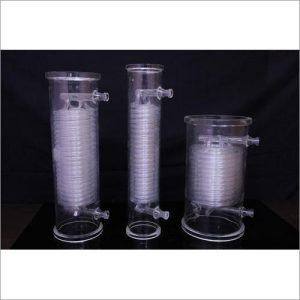Coil Type Heat Exchangers
Introduction
Copper tubes are artificial to special requirements as to dimensional tolerances, finish and tempers for use in condensers and heat exchangers. These copper heat exchanger tubes are normally supplied in straight length in annealed & half hard temper. The copper tubes shaped by are metal industries not only have the stiff tolerances but also have the most dependable dimensions throughout the tube length. The tube surface is clean both inside and outside with no caustic stains. The copper tubes produced by are metal industries are suitable to transfer heat in a wide variety of operating conditions and to refuse to accept decay for the longest period of time possible under the harshest operating circumstances. Coil type exchangers are more efficient than shell and tube exchangers for low flow rates. Due to their simple construction, they are low in price and easy to clean on the shell side. Their thermal efficiency approximates that of a true counter-current flow type exchanger. Condensers are used for condensation of vapours and cooling of liquids. Condensers are made by fusing the number of parallel coils in a glass shell. Coils are made in different diameters using tubes of different bores.
Specifications of Coil type Heat Exchanger:
- Copper tubes are important because motors and motor-driven systems account for 43%-46% of all global electricity consumption and 69% of all electricity used by industry.
- Increasing the mass and cross-section of copper in a coil increases the electrical energy efficiency of the motor.
- Copper motor rotors, a new technology designed for motor applications where energy savings are prime design objectives, are enabling general-purpose induction motors to meet and exceed the National Electrical Manufacturers Association (NEMA) premium efficiency standards.
Applications of Coil type Heat Exchanger:
- The major applications of copper are in electrical wires (60%), roofing and plumbing (20%) and industrial machinery (15%).
- Copper is mostly used as a metal, but when a higher hardness is required it is combined with other elements to make an alloy (5% of total use) such as brass and bronze.
- A small part of copper supply is used in the production of compounds for nutritional supplements and fungicides in agriculture.
- Machining of copper is possible, although it is usually necessary to use an alloy for intricate parts to get good machinability characteristics.
Advantages of Coil Type Heat Exchanger:
- The electrical properties of copper are exploited in copper wires and devices such as electromagnets.
- Integrated circuits and printed circuit boards increasingly feature copper in place of aluminium because of its superior electrical conductivity (see Copper interconnect for the main article)
- Heat sinks and heat exchangers use copper as a result of its superior heat dissipation capacity to aluminium. Vacuum tubes, cathode ray tubes.
- The magnetrons in microwave ovens use copper, as do waveguides for microwave radiation.
- Copper’s greater conductivity versus other metallic materials enhances the electrical energy efficiency of motors.
Images


